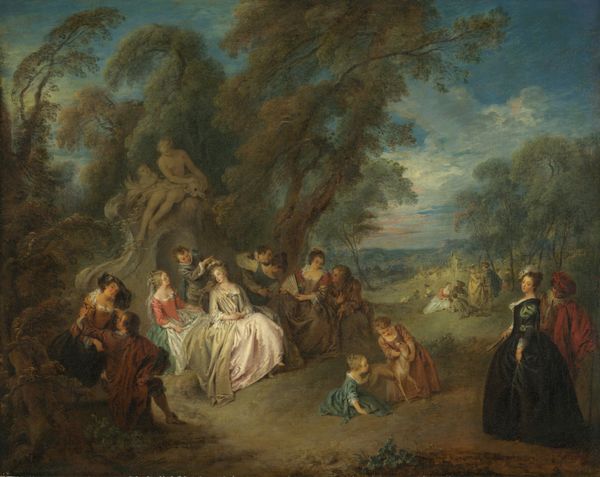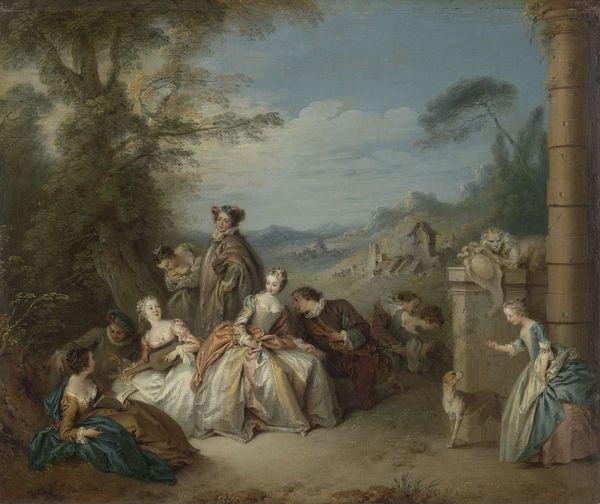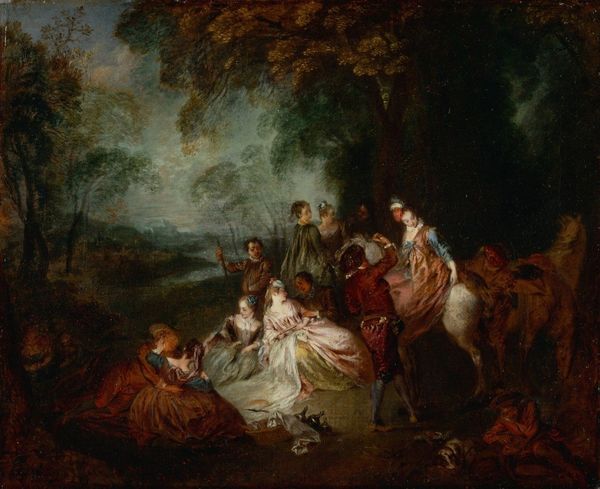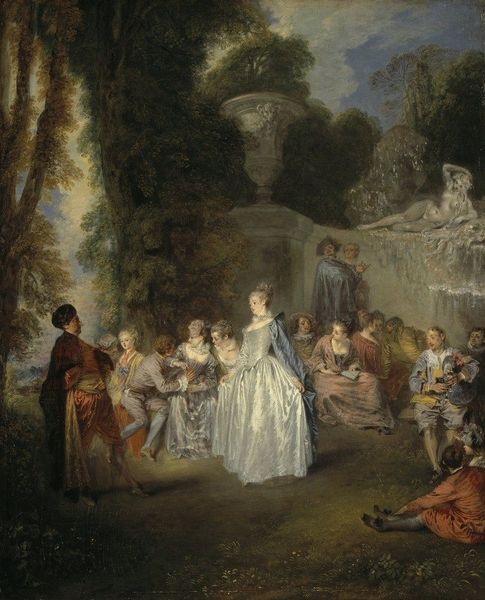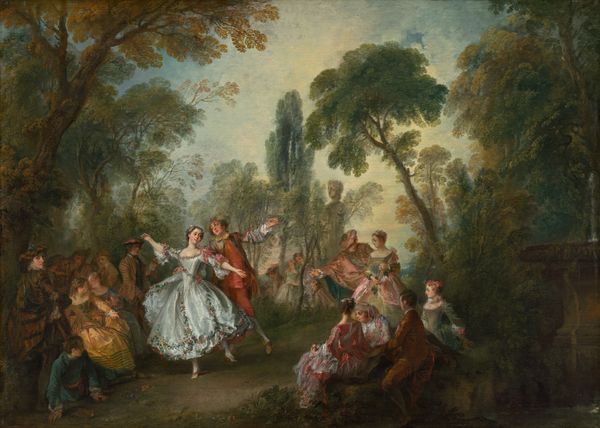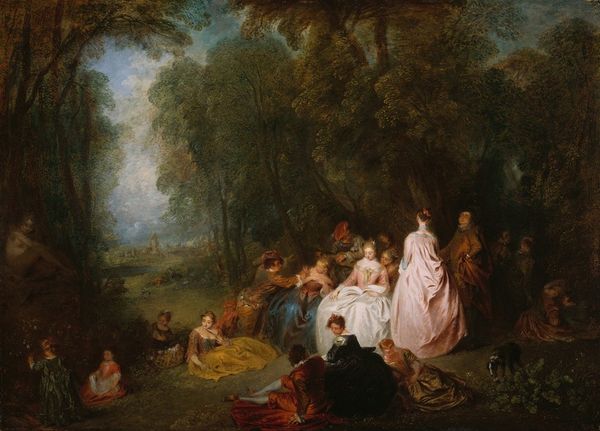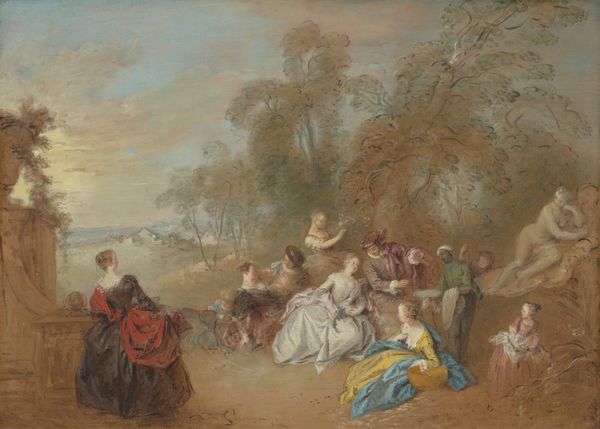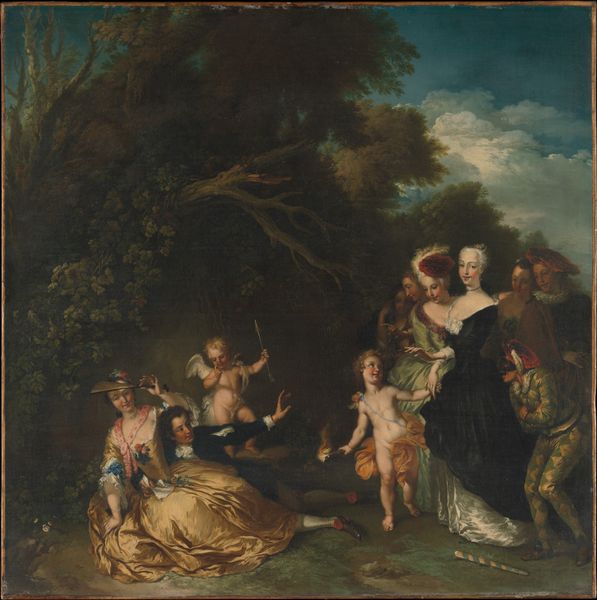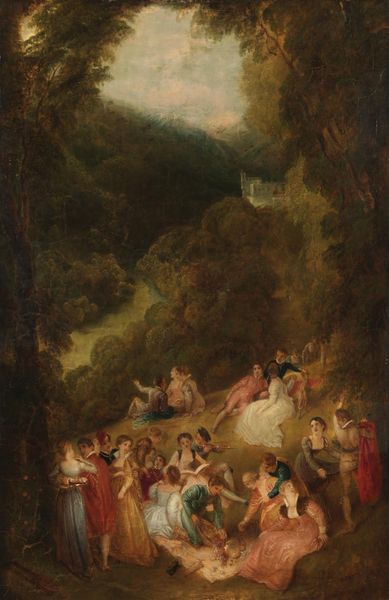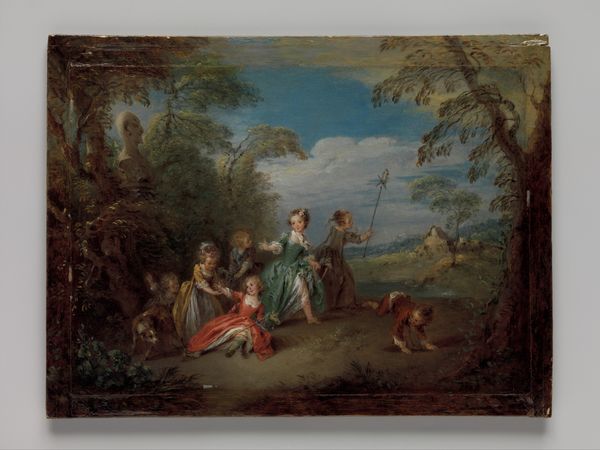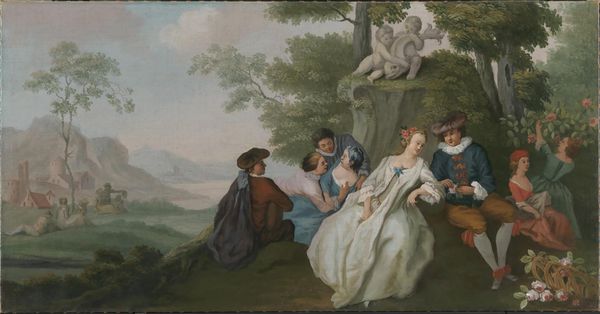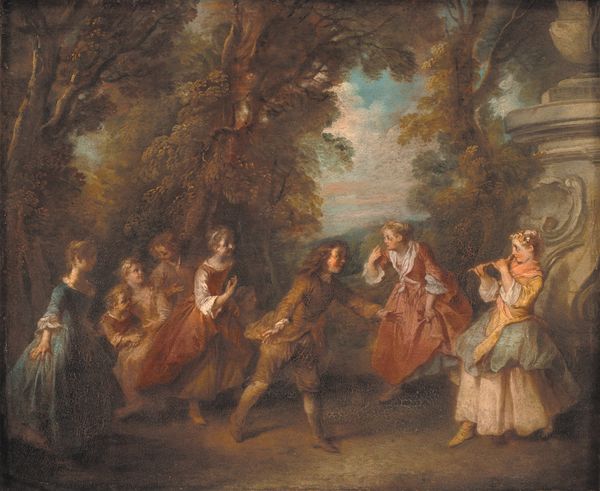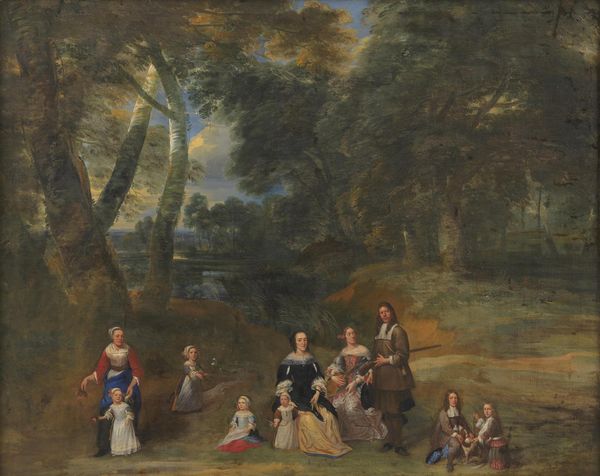
painting, gouache, oil-paint
#
gouache
#
painting
#
gouache
#
oil-paint
#
landscape
#
figuration
#
oil painting
#
group-portraits
#
genre-painting
#
musical-instrument
#
watercolor
#
rococo
Dimensions: 20 1/2 x 26 3/4 in. (52.1 x 67.9 cm)
Copyright: Public Domain
Curator: Jean-Baptiste Joseph Pater gives us this charming scene, "Concert Champêtre," painted sometime between 1729 and 1739. It’s currently housed here at the Metropolitan Museum of Art. Editor: Oh, it just floats! The colors are so delicate, it’s like catching a dream about a picnic. It makes me want to wear silk and play a lute. Curator: Pater, a student of Watteau, really captures that Rococo spirit – leisure, elegance, a touch of wistful romanticism. What do you make of its Rococo nature? Editor: Right? These people, with their shimmering dresses, seem totally detached from any earthy worries. The putti in the corner just confirm it, floating symbols of love and play. Everything curves and whispers… like an elaborate secret. It's wonderfully oblivious! I like how Pater gives it to us softly as if capturing the vibe. Curator: "Oblivious" is a good word. It's easy to see such works, especially given the history that soon follows the era that creates it, as socially irresponsible, a commentary, perhaps unintentional, of what came next? What does it say when art ignores material reality? Editor: Ooh, heavy! I suppose that is an elephant sitting under the frilly skirts and bows of these subjects! But I wonder if that "ignorance" wasn't also its own kind of commentary? By choosing to focus only on pleasure and beauty, maybe Pater's paintings pushed back against the stuffy morality of the time. Or, more cynically, appealed to the vanity of those with enough privilege to want it represented. Curator: Good points! Perhaps it shows a more ambivalent vision. Still, looking back, knowing the Revolution follows this style makes one pause and see an uncomfortable and naive sense of beauty that has no room for suffering or want, or war, perhaps a great commentary of just pure vanity. Editor: Maybe that's its haunting charm. It's lovely, but there is no edge... Still, it's just so yummy to look at. I guess the conversation that we have in it makes it important in itself... and forces us to reflect upon ourselves now! Curator: Absolutely. Its power lies precisely in inviting such reflections. I can never quite make up my mind about that landscape either; what does its pastoral idealism tell us about Parisian tastes at the time? It speaks to an era where, perhaps, artists tried hard to paint something new and create, sometimes naively, a perfect picture... Editor: Exactly! Perhaps creating beauty is a political act.
Comments
No comments
Be the first to comment and join the conversation on the ultimate creative platform.
